News
The Urban Legends of HALLOWEEN

Written by Dr. Jose
John Carpenter’s Halloween is one of the most revered horror films of all time, and in its wake came a surfeit of masked slashers attempting to replicate its success – most of them failing, more often than not.

There are a lot of components to Halloween which make it such an effective film, from Carpenter’s piercing score to Dean Cundey’s eerie night-time cinematography to the terrifying, emotionless white mask Michael Myers wears – and all of it plays a part in creating a winning final product.
But the thing that makes Halloween such an enduring film – something these lesser copycats failed to realize – was Carpenter’s simple approach to the story. At its core, Halloween is an urban legend – more specifically, several urban legends rolled into one. It’s made up of the same stuff you’d tell around the campfire to spook your friends – a practice I’m sure has been around since campfires existed. In essence, Halloween is composed of the immortal substance that has terrified generations for centuries. Deep-rooted, primal fears that are utterly ingrained in our being. You can’t get much scarier than that.

These are the urban legends that makeup Halloween.
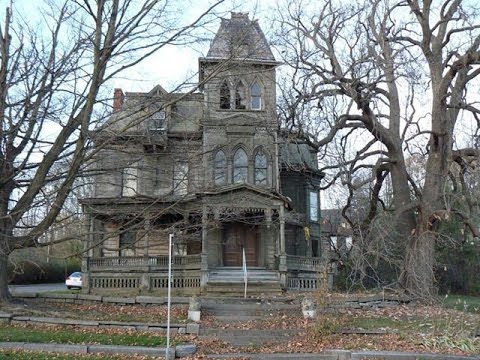
“Lonnie Elam said never to go up there. Lonnie Elam said that’s a
haunted house. He said real awful stuff happened there once.”
This is what little Tommy Doyle warns his babysitter Laurie Strode as they pass by the dilapidated Myers house, for Myers is The Boogeyman, a tale as old as time. This is also a prime example of the urban legend theme that runs through Halloween, showcasing exactly how such legends are spread: by word of mouth.
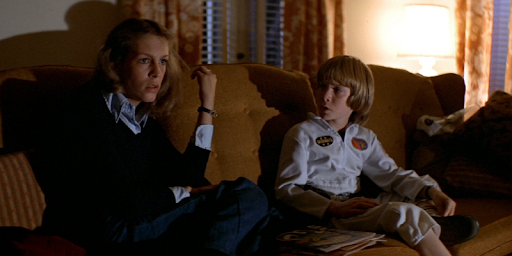
So and so told me.
I know someone whose sister knows someone who said…
I heard it from a friend.
Think back to when you were a kid, racing through the neighborhood on your Huffy. Was there a scary house you and your friends avoided? Or maybe you stopped there just long enough in hopes to catch a glimpse of the witch or creepy old man who lived there? Of course. Every subdivision has a spooky house at the end of the block, one that youngsters warn each other to avoid. And how do the other kids know to avoid it? Well, they heard it from a friend…
“The Hook” is possibly one of the most famous urban legends and you’ve likely heard one of its many incarnations at some point: young lovers on a secluded road hear a report over their car radio that a madman with a hook for a hand has escaped from the local sanitarium. Soon after, they hear a scratching at the car door. The horny boyfriend, desperate to get some action, tells the girlfriend not to worry – but she insists they leave, and so they do. The rejected boyfriend alleviates his tantrum by putting the pedal to the metal. Later, they find a bloody hook dangling from the handle of the car door.

It’s clear how the escaped mental patient aspect of this legend applies to Halloween, including the unforeseen danger lurking outside the car: who can forget the chest-clenching scene where Michael first breaks out of Smith’s Grove sanitarium and monkeys his way on top of the parked station wagon that’s there to transport him to trial?
But let’s not overlook the sex = death aspect of the hook story. The whole reason the teens in the tale survive is because, ultimately, they didn’t have sex. Purity is a generally agreed upon theme in Halloween – the teens who have sex and do drugs die, the ones who don’t (Laurie) live. I tend to disagree; I believe the real cause of the murders is irresponsibility – but I digress. (Also, the radio announcer alerting of an escaped mental patient, followed immediately by the listener’s death, is a scene directly from 1981’s Halloween II.)
Cars continue to play a big role in both urban legends and Halloween, such as in the case of…
As the legend goes, a person (usually a woman) is driving home when a car suddenly pulls up close behind her, flashing its lights and honking its horn. Terrified, the woman races home, all while the mysterious car follows. She gets home, jumps out of her car, and runs to her door. Later, she discovers the car that was tailing her was trying to warn her…about the man with a knife crouching in her backseat.
Halloween‘s poor Annie Brackett isn’t lucky enough to have someone warn her about the killer hiding in her backseat. Instead, she’s allowed only a moment of confusion sitting in the driver’s seat, perplexed by the condensation that has formed on the inside of the car windows…just before Michael Myers springs up behind her with knife. (It should be noted that the murderous backseat character in these urban legends is almost always an escaped mental patient.)
Cars aren’t the only recurring theme in both Halloween and many urban legends – so are phones.
Now we get to the nucleus of Halloween‘s urban legend roots: the babysitter in peril. While creepy phone calls had popped up before – most notably in 1974’s Black Christmas – it was Halloween that established a babysitter as the innocent victim on the end of the receiver. It’s so entwined with this particular urban legend that John Carpenter originally titled the screenplay The Babysitter Murders. Alas, the producer didn’t like it, and wanted it changed – but the theme remained the same. (It’s worth noting that director Fred Walton shot a short film, The Sitter, in 1977, which is based directly on “The Babysitter and the Man Upstairs” urban legend – and after seeing the success of Carpenter’s Halloween – decided to turn it into a full length film: When a Stranger Calls.)
The legend here actually isn’t as much a legend as it is a true story with a few embellishments. But the dressed-up version of the story follows a young female babysitter who receives numerous creepy phone calls from a stranger who keeps warning her to “check on the children”. Eventually she calls the cops and they trace the call, resulting in the memorable line: “Get out! The calls are coming from inside the house!”
Michael Myers doesn’t actually call and harass Laurie Strode about the kids she’s babysitting – in fact, the relation of this legend to the movie is restricted solely to the “maniac stalking the babysitter” element – but still, there is a lot of phone play in Halloween. At one point, Annie – chewing a mouthful of food – calls Laurie, who mistakes the muffled sounds for an obscene caller. This plays a pivotal part later in the movie, and results in our final urban legend, a crossover of sorts…
Lovable airhead, Lynda Van der Klok, has just finished making love with her boyfriend Bob, who has headed downstairs to grab some beer. He soon appears in the bedroom door frame again, this time fully decked out in a sheet with eye holes. Only, that isn’t Bob playing ghost – it’s Michael Myers. Lynda doesn’t realize this of course, and sits down by the phone to call Laurie to see if she’s heard from Annie. By the time Laurie picks up on the other end, Michael has wrapped the phone cord around Lynda’s neck and is choking her to death. All Laurie hears on her is moaning and gurgling – which she mistakes for Annie pranking her, a callback to earlier in the film.
Laurie ignores the threat, but later discovers Lynda dead. This is related to the urban legend “The Roommate’s Death“, which sees a pair of college roommates alone in their dorm for the holiday weekend. One roommate leaves to grab some snacks, the other stays behind. Soon, the roommate in bed hears scratching and gurgling at the door – a warning she ignores. In the morning, she discovers her friend on the other side of the door, dead – throat slashed by a madman.
–
Halloween is so successful in terrifying us because it consists of all those tales we’ve been scaring each other with since swapping stories on the schoolyard. Stalkers, haunted houses, and boogeyman in the closet.
You could argue that urban legends and horror films share a similar three-tiered structure: interdiction, violation, and consequences. That is to say, characters who ignore the warnings, then willfully violate the warnings, and ultimately pay the price. But one thing is certain: horror films share the same function as urban legend – they’re intended not only to scare, but also to warn.
Just like little Tommy Doyle tried to warn Laurie that The Boogeyman really existed.
Listen to the 'Eye On Horror Podcast'

News
Brad Dourif Says He’s Retiring Except For One Important Role
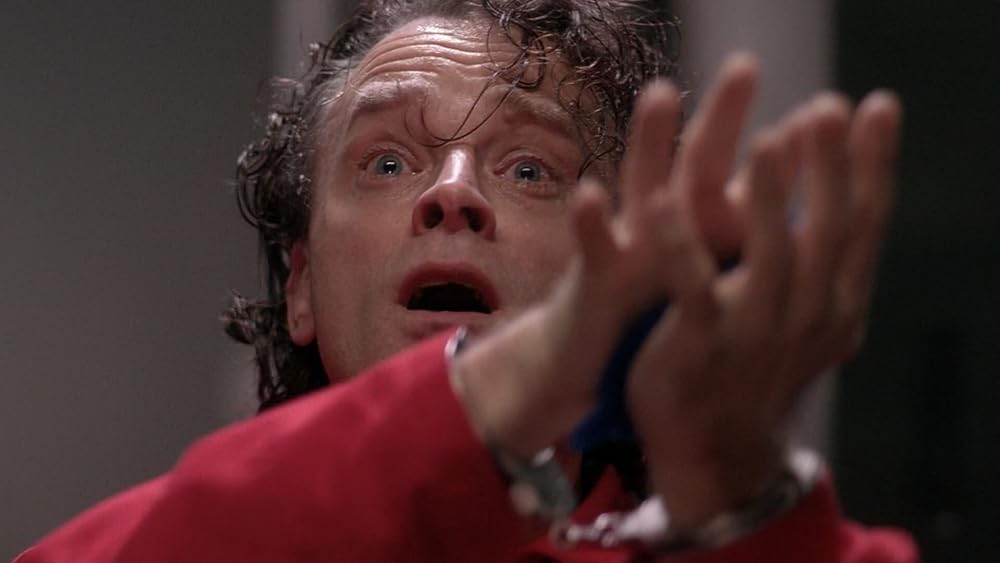
Brad Dourif has been doing movies for nearly 50 years. Now it seems he is walking away from the industry at 74 to enjoy his golden years. Except, there is a caveat.
Recently, digital entertainment publication JoBlo’s Tyler Nichols talked to some of the Chucky television series cast members. During the interview, Dourif made an announcement.
“Dourif said that he’s retired from acting,” says Nichols. “The only reason he came back for the show was because of his daughter Fiona and he considers Chucky creator Don Mancini to be family. But for non-Chucky stuff, he considers himself retired.”
Dourif has voiced the possessed doll since 1988 (minus the 2019 reboot). The original movie “Child’s Play” has become such a cult classic it’s at the top of some people’s best chillers of all time. Chucky himself is ingrained in pop culture history much like Frankenstein or Jason Voorhees.
While Dourif may be known for his famous voiceover, he is also an Oscar-nominated actor for his part in One Flew Over the Cuckoo’s Nest. Another famous horror role is The Gemini Killer in William Peter Blatty’s Exorcist III. And who can forget Betazoid Lon Suder in Star Trek: Voyager?
The good news is that Don Mancini is already pitching a concept for season four of Chucky which might also include a feature-length movie with a series tie-in. So, Although Dourif says he is retiring from the industry, ironically he is Chucky’s friend till the end.
Listen to the 'Eye On Horror Podcast'
Editorial
7 Great ‘Scream’ Fan Films & Shorts Worth a Watch
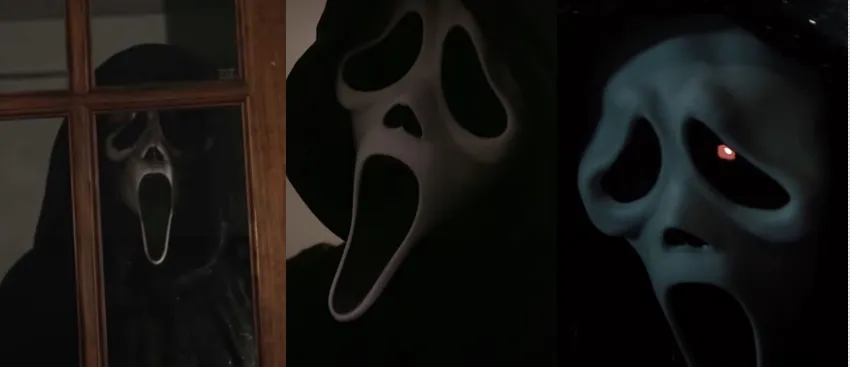
The Scream franchise is such an iconic series, that many budding filmmakers take inspiration from it and make their own sequels or, at least, build upon the original universe created by screenwriter Kevin Williamson. YouTube is the perfect medium to showcase these talents (and budgets) with fan-made homages with their own personal twists.
The great thing about Ghostface is that he can appear anywhere, in any town, he just needs the signature mask, knife, and unhinged motive. Thanks to Fair Use laws it’s possible to expand upon Wes Craven’s creation by simply getting a group of young adults together and killing them off one by one. Oh, and don’t forget the twist. You’ll notice that Roger Jackson’s famous Ghostface voice is uncanny valley, but you get the gist.
We have gathered five fan films/shorts related to Scream that we thought were pretty good. Although they can’t possibly match the beats of a $33 million blockbuster, they get by on what they have. But who needs money? If you’re talented and motivated anything is possible as proven by these filmmakers who are well on their way to the big leagues.
Take a look at the below films and let us know what you think. And while you’re at it, leave these young filmmakers a thumbs up, or leave them a comment to encourage them to create more films. Besides, where else are you going to see Ghostface vs. a Katana all set to a hip-hop soundtrack?
Scream Live (2023)
Ghostface (2021)
Ghost Face (2023)
Don’t Scream (2022)
Scream: A Fan Film (2023)
The Scream (2023)
A Scream Fan Film (2023)
Listen to the 'Eye On Horror Podcast'
Movies
Another Creepy Spider Movie Hits Shudder This Month
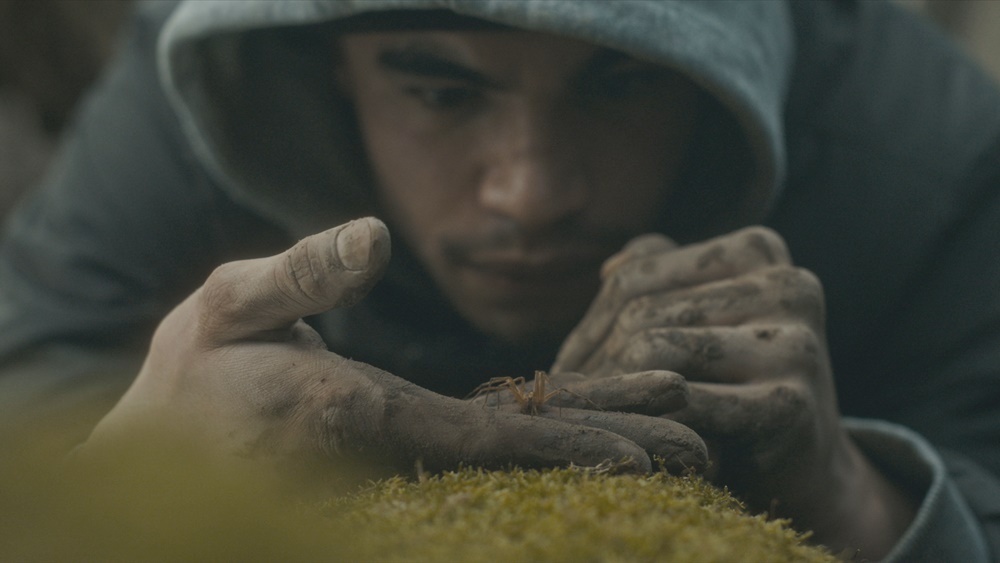
Good spider films are a theme this year. First, we had Sting and then there was Infested. The former is still in theaters and the latter is coming to Shudder starting April 26.
Infested has been getting some good reviews. People are saying that it’s not only a great creature feature but also a social commentary on racism in France.
According to IMDb: Writer/director Sébastien Vanicek was looking for ideas around the discrimination faced by black and Arab-looking people in France, and that led him to spiders, which are rarely welcome in homes; whenever they’re spotted, they’re swatted. As everyone in the story (people and spiders) is treated like vermin by society, the title came to him naturally.
Shudder has become the gold standard for streaming horror content. Since 2016, the service has been offering fans an expansive library of genre movies. in 2017, they began to stream exclusive content.
Since then Shudder has become a powerhouse in the film festival circuit, buying distribution rights to movies, or just producing some of their own. Just like Netflix, they give a film a short theatrical run before adding it to their library exclusively for subscribers.
Late Night With the Devil is a great example. It was released theatrically on March 22 and will begin streaming on the platform starting April 19.
While not getting the same buzz as Late Night, Infested is a festival favorite and many have said if you suffer from arachnophobia, you might want to take heed before watching it.
According to the synopsis, our main character, Kalib is turning 30 and dealing with some family issues. “He’s fighting with his sister over an inheritance and has cut ties with his best friend. Fascinated by exotic animals, he finds a venomous spider in a shop and brings it back to his apartment. It only takes a moment for the spider to escape and reproduce, turning the whole building into a dreadful web trap. The only option for Kaleb and his friends is to find a way out and survive.”
The film will be available to watch on Shudder starting April 26.
Listen to the 'Eye On Horror Podcast'
-

 News3 days ago
News3 days agoThis Horror Film Just Derailed a Record Held by ‘Train to Busan’
-

 Movies3 days ago
Movies3 days agoWatch ‘Immaculate’ At Home Right Now
-

 News4 days ago
News4 days agoRead Reviews For ‘Abigail’ The Latest From Radio Silence
-

 News2 days ago
News2 days agoHome Depot’s 12-Foot Skeleton Returns with a New Friend, Plus New Life-Size Prop from Spirit Halloween
-

 News4 days ago
News4 days agoMelissa Barrera Says Her ‘Scream’ Contract Never Included a Third Movie
-

 Editorial5 days ago
Editorial5 days agoRob Zombie’s Directorial Debut Was Almost ‘The Crow 3’
-

 News1 day ago
News1 day agoWoman Brings Corpse Into Bank To Sign Loan Papers
-

 News3 days ago
News3 days agoA24 Joins Blockbuster Movie Club With Their Biggest Opening Ever
























You must be logged in to post a comment Login